Although healthcare environments are complex, we know there are several key factors that have a huge impact on how people feel. We have selected five key areas that we think are especially important to bear in mind in the design of healthcare environments.
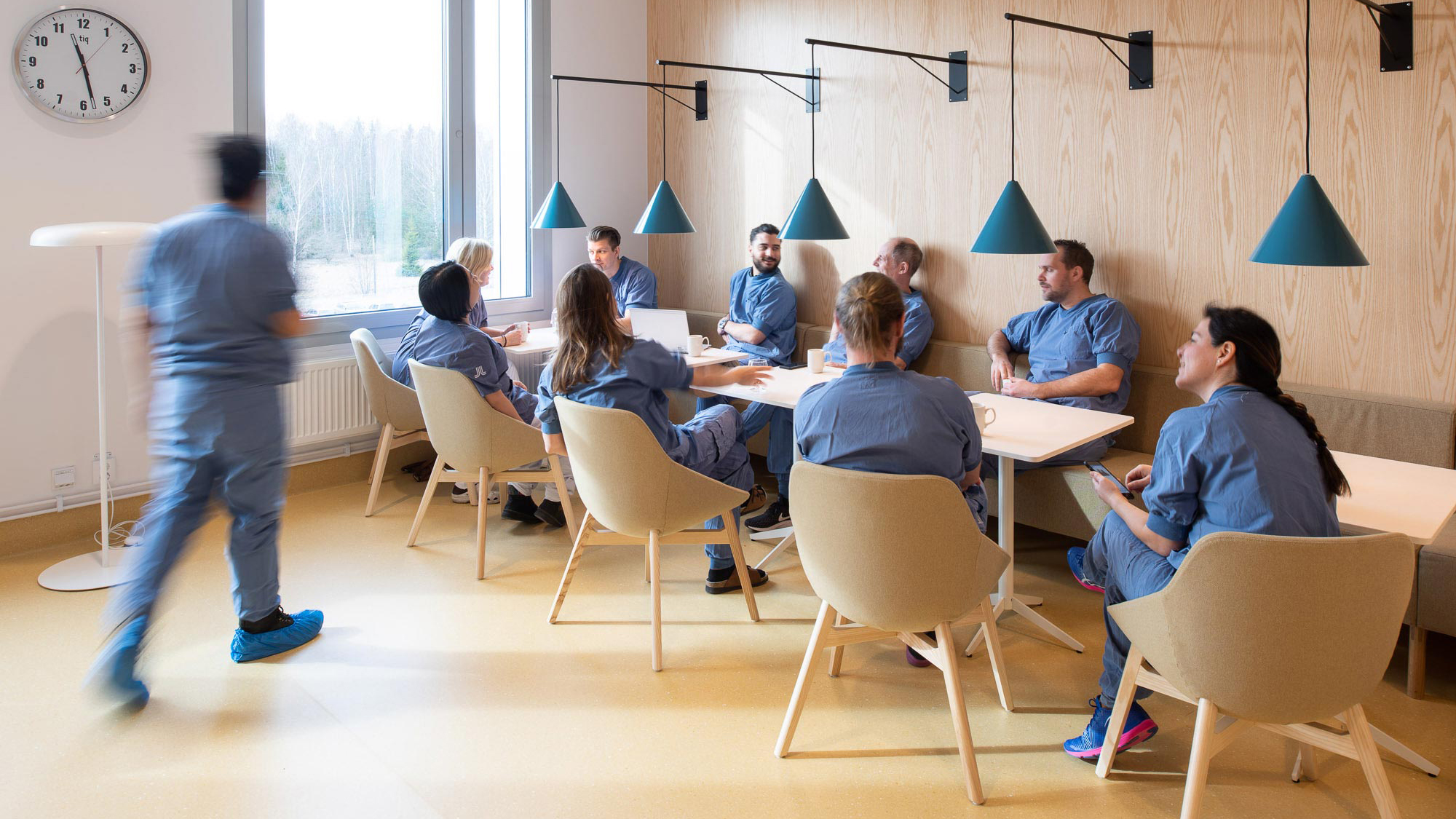
How we create good healthcare environments – five keys to success from research
When we design healthcare environments, we apply the latest findings about the significance of buildings for staff well-being and patient recovery. By combining the evidence of research with our experience, we are guided in our design choices towards the best solutions.
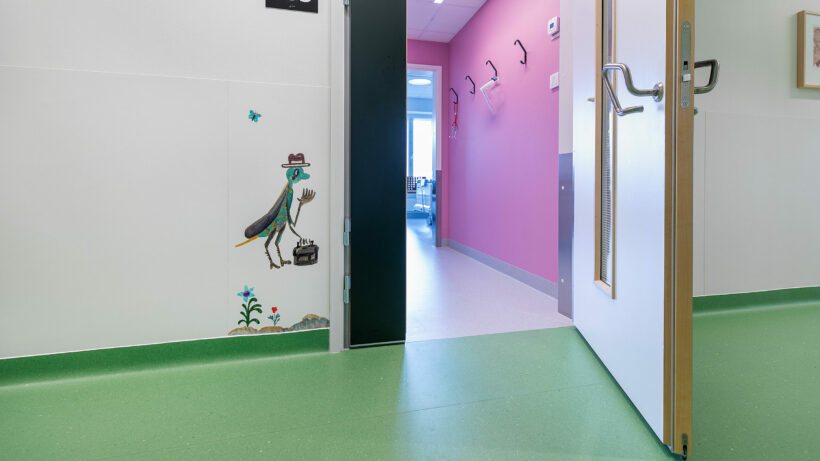
Queen Silvia Children’s Hospital.
1. Navigability
In large healthcare buildings, it’s often difficult for patients and visitors to find their way. This raises stress levels and requires more from staff, who have to point them in the right direction. That’s why it’s important to place extra emphasis on simple floorplans, smart signage, clearly marked lifts and stairwells, and colour schemes that facilitate navigability. Navigability is something we work with in all our projects. Queen Silvia Children’s hospital is a good example where children’s perspective has contributed to all rooms having their own entrance colors. This creates unique rooms so that even the smallest children can find their rooms easily, while also making it easier for staff to find their way around.
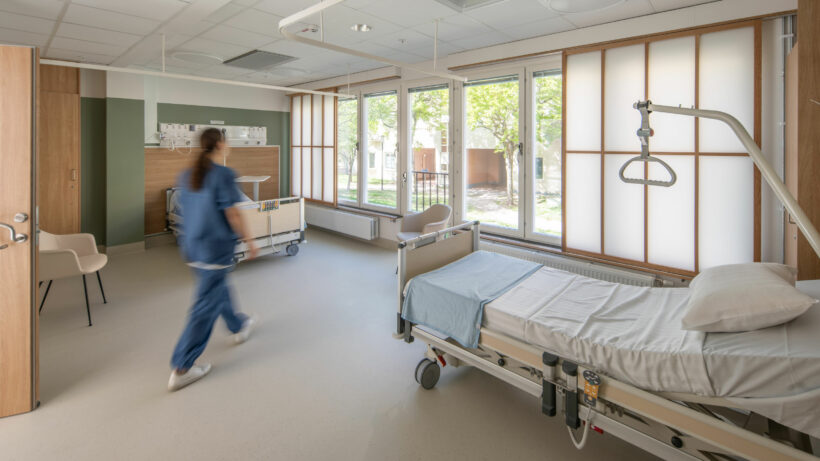
Arthroplasty Clinic, Bromma Hospital, Sweden
2. Light
Studies show that daylight can affect patients’ sleep as well as reduce both perceived pain and the use of painkillers. Other studies show that staff who spend time in rooms with windows have a better mood, blood pressure, and sleep. It’s not only daylight that affects health, but also artificial lighting. Research has shown that staff alertness and concentration are affected by the right lighting. Lighting also affects patients’ sleep and thus their recovery as well. Arthroplasty Clinic, Bromma Hospital is an example where large, generous windows and great care have been taken with light to create a healthy environment for both staff and patients.
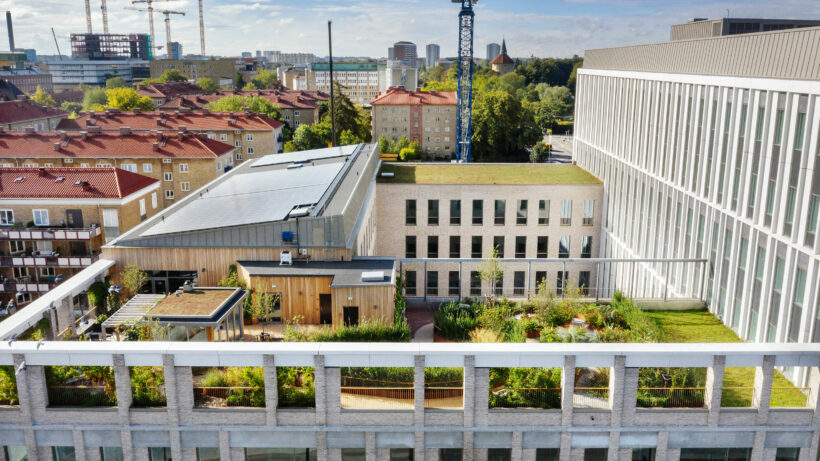
Priorn. Region Skåne’s memory clinic in Malmö, Sweden
3. Greenery
There are studies that show that contact with nature can result in the need for less medication and fewer days spent in care among hospital patients. Being able to spend time outdoors among greenery has huge benefits for the very weakest and sickest, for those suffering from stress and anxiety, and those who are deeply affected by a crisis. The outdoor environment is a valuable resource in a healthcare context, and with the right design it can make a huge difference to the health of both patients and staff. We’ve taken this into account in several projects, such as this unique roof garden with space for therapeutic cultivation and stress management for Region Skåne’s memory clinic in Malmö, which was designed together with a team of healthcare staff and researchers from SLU.
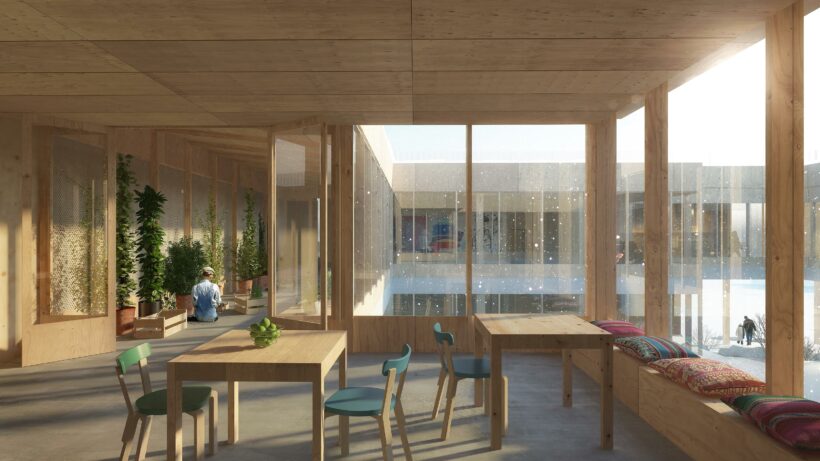
Nuuk’s psychiatric clinic, Greenland
4. Security and attractiveness
It may seem obvious that it’s important that a healthcare environment feels secure and attractive. But did you know that there are studies that suggest that the design of a building affects the perceived quality of care? For example, the design can affect how long people feel they’ve had to wait in a waiting room, as well as well-being and patient satisfaction with staff. In Greenland, security at Nuuk’s psychiatric clinic is especially important. There are views outside as well as a good internal overview, which help to create a secure, calm, and safe atmosphere for patients and staff.
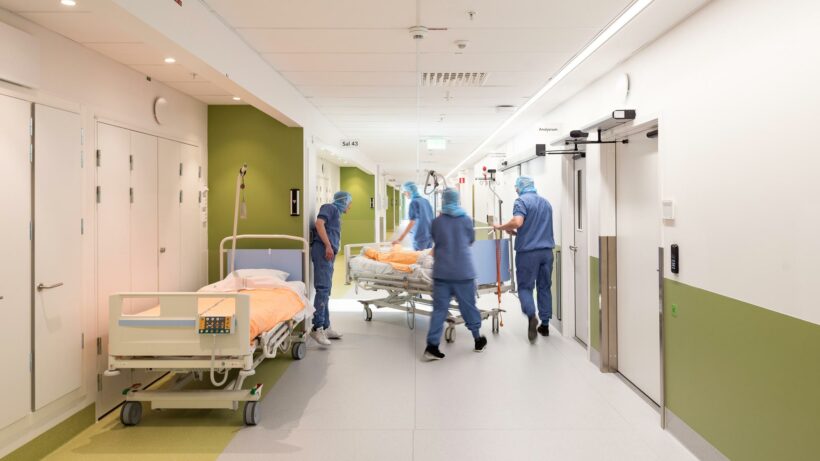
5. Future-proofing
A hospital building can be faced with major changes one or more times a year, many of which require reconfigurations or extensions. The reason for this is the rapid development of healthcare. Consequently, we don’t know how future healthcare will look. In order to minimise as well as facilitate future changes, it’s important to design healthcare buildings with general structures. For instance, certain activities need to be able to increase or decrease in size, and new technology needs to be implementable with as little intrusion as possible so as not to affect the qualities that provide a good healthcare environment. The O building at the Karolinska University Hospital in Huddinge has been built with an emphasis on flexibility, which enabled the transformation of operating theatres to intensive care units during the first wave of the coronavirus in the spring of 2020.